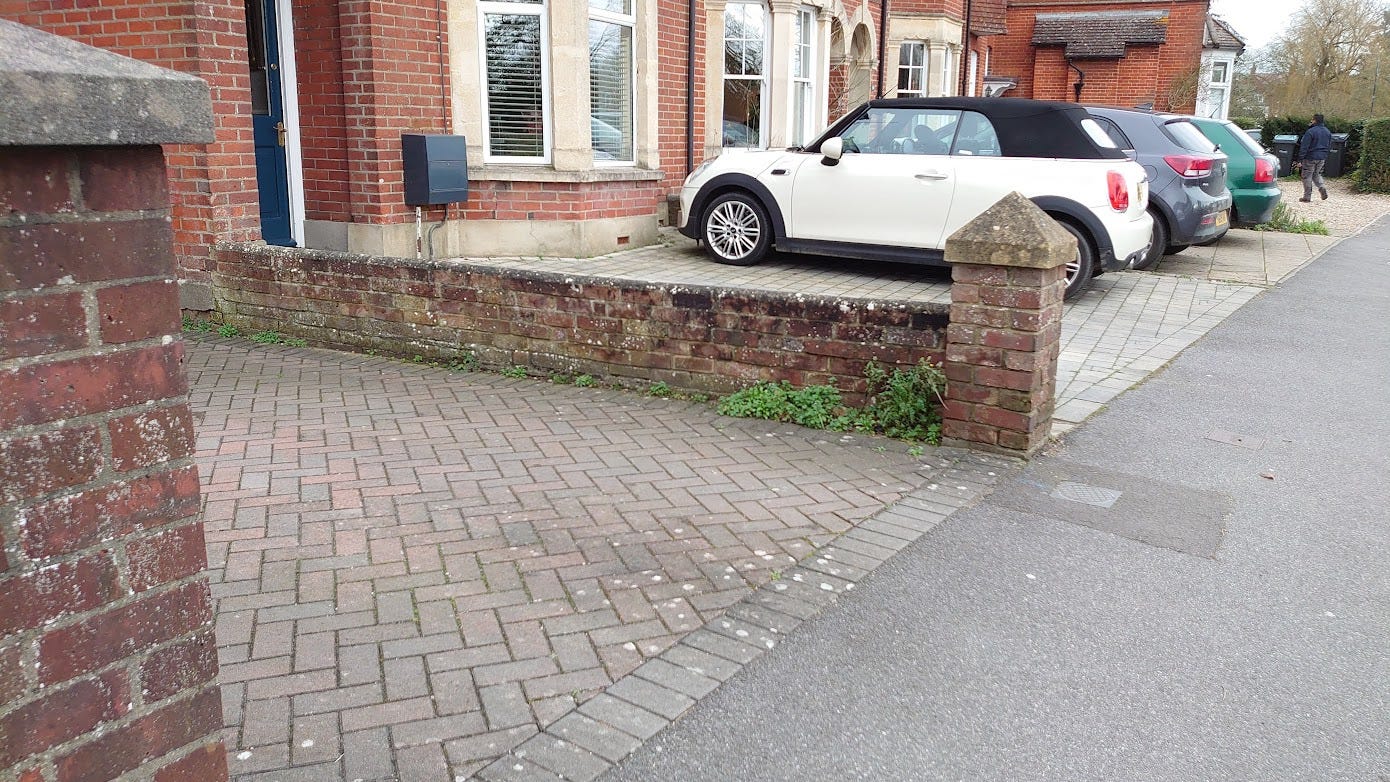Urban front gardens and flooding
Front gardens, hard landscaping, water butts and flooding
Do you get depressed by the paved over ‘gardens’ of urban streets? I know I do and its something that has bothered me for a long time. It’s not just their boring appearance and complete lack of biodiversity, but the fact it’s making surface water flooding so much worse and that affects the whole community.
I often walk from Salisbury station to the city centre via Mill Road and this takes me past the water meadows beside the River Avon. On the right are glorious views of the water meadows, gardens and the famous cathedral spire, but on the left is a row of classic Edwardian town houses. Only one has a ‘green’ front garden with lawn while its neighbour has a flower bed and a screen of espalier fruit trees around gravelled area. The rest have given over their front gardens to car parking. There’s so much hard landscaping, which together with a large area of roofs, it’s not surprising that the city suffers from frequent floods. You can see this road for y…





